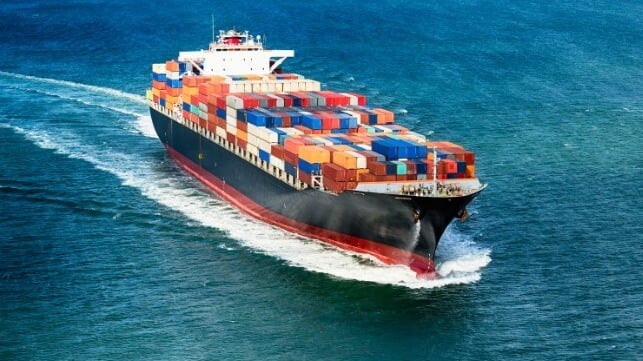BIMCO: Carriers Increasing Slow Steaming Impacting Liner Capacity

Slow Steaming has become a buzzword phrase in the shipping industry gaining attention as the carriers are confronted by increasing environmental regulations and falling demand. Industry trade association BIMCO’s chief shipping analyst, Niels Rasmussen, is writing about the impact slowing liners is having on the industry while forecasting that the group believes sailing speeds could fall by 10 percent before 2025.
Slow steaming was first introduced BIMCO reports in the aftermath of the financial crisis more than a decade ago, cutting sailing speed on mainline routes by as much as 20 percent. The motivation then and again now as freight rates and the spot market had dropped dramatically is that when ships adjust their speed, the transport capacity is affected and the adjustment can be an effective way of managing capacity supply. Lower sailing speeds however are drawing longer-term attention because they also reduce bunker oil consumption and greenhouse gas emissions.
“During the COVID-19 pandemic, liner operators increased the average sailing speed by up to four percent due to strong demand and widespread port congestion,” writes BIMCO. “Today, the situation is very different and in the first quarter of 2023, the average sailing speed has slowed to 13.8 knots, down four percent year-over-year.”
Most of the focus on slow steaming is now centering on the emerging environmental regulations from the International Maritime Organization, including the Energy Efficiency Existing Ship Index (EEXI) and the Carbon Intensity Indicator (CII). One of the techniques that industry observers predicted would be adopted was slowing the speed of vessels to reduce fuel consumption and in turn emissions.
To comply with the EEXI, BIMCO notes that some ships have had to install Engine Power Limitations (EPL), reducing their top speed. To maintain the buffer between the top speed and scheduled speed creating the cushion to allow ships to recover from delays in port or due to weather, carriers have had to reduce schedule speeds and extend travel times for customers. The Carbon Intensity Indicator (CII) regulation which the IMO officially implemented at the beginning of 2023 and overall greenhouse gas emission targets BIMCO forecasts may also drive further reductions in sailing speed.
Average sailing speed has reduced significantly, although the traditional faster speed in the head-haul direction remains reports BIMCO in its analysis of ship operations. They note that the adjustments in schedules have naturally mostly impacted the faster head-haul direction while narrowing the difference in speed between the directions. The larger ships sailing intercontinental trades they note have also continued to sail faster than the smaller ships in intra-regional trades
Taking into account all the issues now at play in the industry, Rasmussen writes, “These traditions may, however, also be about to change.”
In 2019, he notes the largest ships sailed on average 2.6 knots faster than the smallest ships. During the first quarter of 2022, that speed difference had narrowed to 1.8, and further to 1.6 during the first quarter of 2023. As a result, the average sailing speed weighted by the ships’ TEU capacity fell by six percent year-over-year in the first quarter of 2023 BIMCO calculates. By comparison, they note that the simple average sailing speed fell only four pear year-over-year.
“Supply has therefore decreased faster than the sailing speed,” says Rasmussen. “The speed difference between head-haul and back-haul direction may also be reduced in the future.” He predicts, ”We believe it is a good indication of things to come.”
BIMCO however also notes other potential impacts on the market beyond being used as a tool to manage capacity and achieve near-term improvements to meet the emissions requirements. They note that the lower average sailing speed may be due to improved port congestion. During the height of the surge in shipping volumes, carriers needed to deploy extra capacity to manage with the backlogs and long delays vessels were experiencing on their routes due to port congestion. With port congestion largely cleared away now that volumes have dropped, BIMCO also notes that some ships are returning more slowly to Asia-Pacific than normal.
